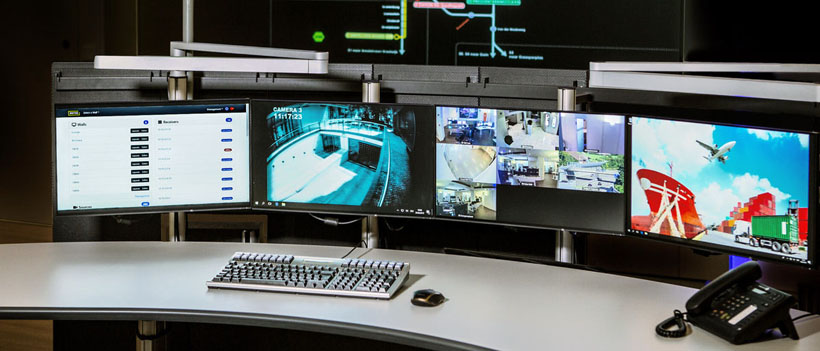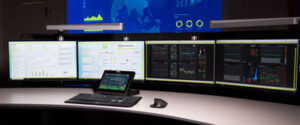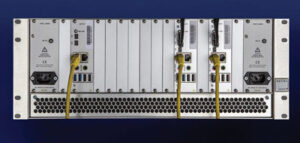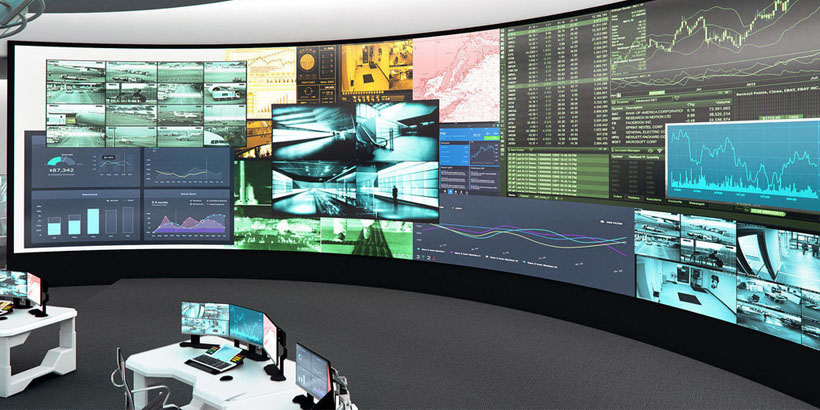Given the rapidly evolving technological landscape, a growing number of businesses and organisations are deploying smart systems to meet a range of requirements across their operational processes. The ability to share data between these systems adds to the inherent value on offer and introduces benefits which ensure a tangible return on investment is realised.
New technological developments, coupled with increased processing capacity, allow modern systems to deliver ever higher levels of efficiency. Where once the common approach was for sub-systems to be ‘siloed’, the advantages of data-based intelligent integrations have changed the way many businesses work. While taking a unified approach delivers significant benefits for most businesses and organisations, it can also present challenges.
Traditionally, the siloed design model was common because system providers took an insular approach, only dealing with departments relevant to their specific system within a corporation. For example, security systems didn’t communicate with HVAC or elevator control, power management didn’t share data with the communications infrastructure, etc., more because of limitations in technology than due to a need to keep the systems discrete. While technology developments have pushed these barriers to one side, there still remains something of a stumbling block to the unified design model, because legacy hardware can be inflexible.
Due to this, in some applications operators are required to have separate keyboards and mice for each independent server or PC, making the creation of a homogenous system somewhat difficult. The efficiencies introduced by the technologies are lost because the operator’s environment uses a lot of duplicated devices, which can make operations clumsy and slow.
Another downside of siloed systems can be the number of workstations required for the disparate elements. This not only creates issues in terms of heat and noise, but also eats into one of the more costly overheads for any business: real estate.
For the vast majority of end users, it is simply not practical to tear out the legacy systems and start again with one unified solution. In many applications, it wouldn’t be the best approach, as many specialised solutions support necessary functionality which isn’t available from more generic total management systems.
One other issue, which prevents the implementation of efficient workflows, is the inability of many siloed solutions to be flexible in terms of operator locations. Given the current trend of hot-desking, and with an increased number of organisations looking for remote working options, if an operator needs to sit at a specific desk to access the system it can be a deal-breaker. Also, in terms of continuity, it might not always be possible for operators to be in the same location. Whether due to disasters, infrastructure failures or pandemics, the location of operators needs to be flexible.
Using Smart KVMs
 One solution is the deployment of smart KVMs, such as the Wey Smart Touch keyboard available via Command Rooms Ltd. KVM matrix systems include support for keyboards, video monitors and mice. The Wey Smart Touch keyboard can access a host of different servers and workstations on the dedicated network, bringing up custom displays on video walls so operators have a seamless view of site status and can interact with a number of systems simultaneously. Essentially, the unit offers control and management of various data sources, from a variety of locations, via a single user interface.
One solution is the deployment of smart KVMs, such as the Wey Smart Touch keyboard available via Command Rooms Ltd. KVM matrix systems include support for keyboards, video monitors and mice. The Wey Smart Touch keyboard can access a host of different servers and workstations on the dedicated network, bringing up custom displays on video walls so operators have a seamless view of site status and can interact with a number of systems simultaneously. Essentially, the unit offers control and management of various data sources, from a variety of locations, via a single user interface.
Equipped with a fully customisable touch screen, the Wey Smart Touch keyboard allows users to select multiple data sources (such as video surveillance, analytics reports, alarm management screens, access control transactions, building management information, etc.) and visualise these as bespoke displays on a video wall using Wey Smart Visual. This is achieved through an intuitive drag-and-drop function. The touch-screen enables simple control over the various elements and modules required by the operator.
Wey Smart Visual enables the integration of numerous displays to a flexible and customisable video wall. Data sources can be scaled and moved around to create displays for a range of users, and its modular architecture means the solution can be expanded to support any number of sources and screens.
The Wey Smart Touch keyboard connects to the system resources over a secure, dedicated network. Given the critical nature of such systems, it is vital to keep system data off the internet. This dedicated network enhances security and also eliminates any problems which an organisation’s IT department might have with the addition of devices to a corporate network. In terms of performance, the Wey network operates in real-time, without any latency, as will be expected from an advanced security, safety and control-based solution.

The touch-screen is supplemented by additional customisable keypads which make use of function keys, allowing bespoke operations to be simplified to a single button press via smart macros. This enhances efficiency as it allows the user to create shortcuts which are specific to their workflows and procedures. This can also be a benefit in terms of compliance, if – for example – a defined set of actions must be applied when an event occurs.
Where hygiene regulations need to be met, the main QWERTY keyboard of the unit can be switched, so each operator can use their own insert. This is also a benefit should an operator damage the keyboard.
The Wey Smart Touch keyboard is suited to a range of environments, and features motion and light sensors to ensure optimum settings can be maintained. Peripheral devices can be added via a number of industry-standard connection ports.
 Each Wey Smart Touch keyboard stores its own configuration, which means the location of an operator isn’t relevant. They can connect to the dedicated network from any location, and the previous settings and configurations are retained through the implementation of user profiles. This allows an operator to access any IT resources they are authorised to use from any location. In case of damage to the Wey Smart Touch keyboard, all configurations are backed up to a remote device, making replacements simple and intuitive.
Each Wey Smart Touch keyboard stores its own configuration, which means the location of an operator isn’t relevant. They can connect to the dedicated network from any location, and the previous settings and configurations are retained through the implementation of user profiles. This allows an operator to access any IT resources they are authorised to use from any location. In case of damage to the Wey Smart Touch keyboard, all configurations are backed up to a remote device, making replacements simple and intuitive.
Because of the flexible approach, organisations can distribute their IT resources, and their operational monitors and control centres, to any location. This frees up real-estate and ensures a cohesive solution regardless of the actual topology of a networked solution.
 This is of great value in disaster-recovery conditions, as well as simplifying maintenance and support for complex systems. The Wey Smart Touch keyboards can be configured for a range of failover scenarios, ensuring continuity of operations in a wide range of circumstances. Downtime is negligible, as the smart system can switch resources based on real-time system notifications. This is also a benefit during maintenance and upgrade scenarios.
This is of great value in disaster-recovery conditions, as well as simplifying maintenance and support for complex systems. The Wey Smart Touch keyboards can be configured for a range of failover scenarios, ensuring continuity of operations in a wide range of circumstances. Downtime is negligible, as the smart system can switch resources based on real-time system notifications. This is also a benefit during maintenance and upgrade scenarios.
With a number of organisations implementing redundant control rooms for emergency situations and disaster management, the flexibility of the Wey Smart Touch keyboard comes to the fore. For example, if it is necessary for system operators to decamp to another location in a failover scenario or during an incident, they simply need to take their QWERTY insert with them. Once this is fitted to another Wey Smart Touch keyboard, they can continue to work. The system will recognise them via their user profile, making fall-back scenarios a smooth and simple transition.
In Summary
An increasing number of businesses and organisations are seeking to take a unified approach to system management, and as such it is often necessary to bring together a variety of sub-systems to create one seamless solution. To ensure the expected efficiencies are achieved, a single interface is required which is both intuitive and reliable.
By using Wey Smart Touch keyboards from Command Rooms Ltd, a solution which is fully customisable and delivers a high degree of flexibility can be implemented. Security is also enhanced as full failover support is ensured, and additional cost-savings through the remote management of resources can be achieved.


